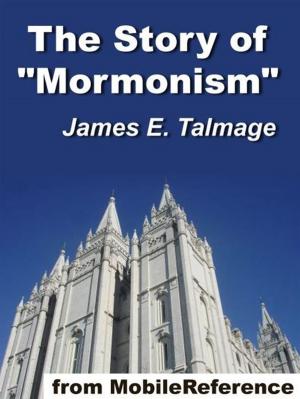THIS LAND
Only One Cumorah
Nonfiction, Religion & Spirituality, Reference, Antiquities & Archaeology, History, Americas, North America, Christianity, Denominations, Mormonism| Author: | Wayne May | ISBN: | 9780985503413 |
| Publisher: | Hayriver Press | Publication: | October 28, 2012 |
| Imprint: | Language: | English |
| Author: | Wayne May |
| ISBN: | 9780985503413 |
| Publisher: | Hayriver Press |
| Publication: | October 28, 2012 |
| Imprint: | |
| Language: | English |
The Geography of the Book of Mormon by E. Cecil McGavin and Willard W. Bean (& Wayne N. May) is an incisive study of the geographical locations of the three colonies that came to America in ancient days; and their spreading into North America in what is now Southern Canada and the country east of the Mississippi River and south of the Great Lakes. The authors address themselves to the non-scientist, the ordinary reader and student of religion. The text needs to be studied rather than just read. Anyone interested in the subject will find the effort thoroughly worth while.
The thesis centers around a concept of the Prophet Joseph Smith who “was definitely convinced that the Nephites had spread over North America.” While traveling with Zion’s camp near the Illinois River, a skeleton was found which Joseph Smith identified as Zelph. He explained that Zelph was a converted Lamanite and became a great warrior of the Nephite armies “from the eastern sea to the Rocky Mountains.” Nearby, as explained by the Prophet, the Nephite city of Manti had been built. Later when the remains of a stone tower were found along the Grand River in Missouri, he told his brethren that it was ‘an old Nephite tower.”
The authors of this book maintain that the Nephites spread throughout North America and the country particularly east of the Mississippi River. Contiguous to the Great Lakes is where the thousands of people finally found the land of their desires. The present Hill Cumorah was the center and here the gold plates were buried to be brought forth in this day by the visitation of the Angel Moroni, who placed them in the hands of the Prophet Joseph Smith. Here the great battles were finally fought between the Nephites and Lamanites, and archeologists of today verify this idea by their careful investigations.
Levi Edgar Young of the First Council of the Seventy.
The Geography of the Book of Mormon by E. Cecil McGavin and Willard W. Bean (& Wayne N. May) is an incisive study of the geographical locations of the three colonies that came to America in ancient days; and their spreading into North America in what is now Southern Canada and the country east of the Mississippi River and south of the Great Lakes. The authors address themselves to the non-scientist, the ordinary reader and student of religion. The text needs to be studied rather than just read. Anyone interested in the subject will find the effort thoroughly worth while.
The thesis centers around a concept of the Prophet Joseph Smith who “was definitely convinced that the Nephites had spread over North America.” While traveling with Zion’s camp near the Illinois River, a skeleton was found which Joseph Smith identified as Zelph. He explained that Zelph was a converted Lamanite and became a great warrior of the Nephite armies “from the eastern sea to the Rocky Mountains.” Nearby, as explained by the Prophet, the Nephite city of Manti had been built. Later when the remains of a stone tower were found along the Grand River in Missouri, he told his brethren that it was ‘an old Nephite tower.”
The authors of this book maintain that the Nephites spread throughout North America and the country particularly east of the Mississippi River. Contiguous to the Great Lakes is where the thousands of people finally found the land of their desires. The present Hill Cumorah was the center and here the gold plates were buried to be brought forth in this day by the visitation of the Angel Moroni, who placed them in the hands of the Prophet Joseph Smith. Here the great battles were finally fought between the Nephites and Lamanites, and archeologists of today verify this idea by their careful investigations.
Levi Edgar Young of the First Council of the Seventy.















